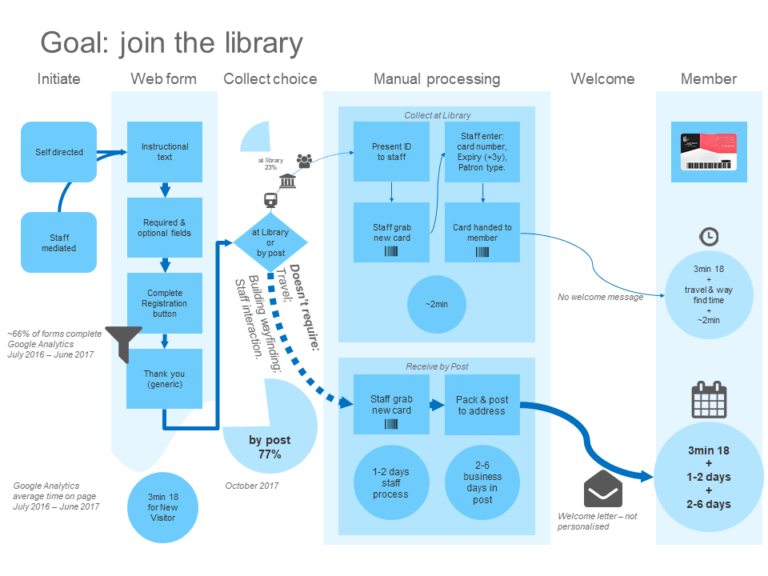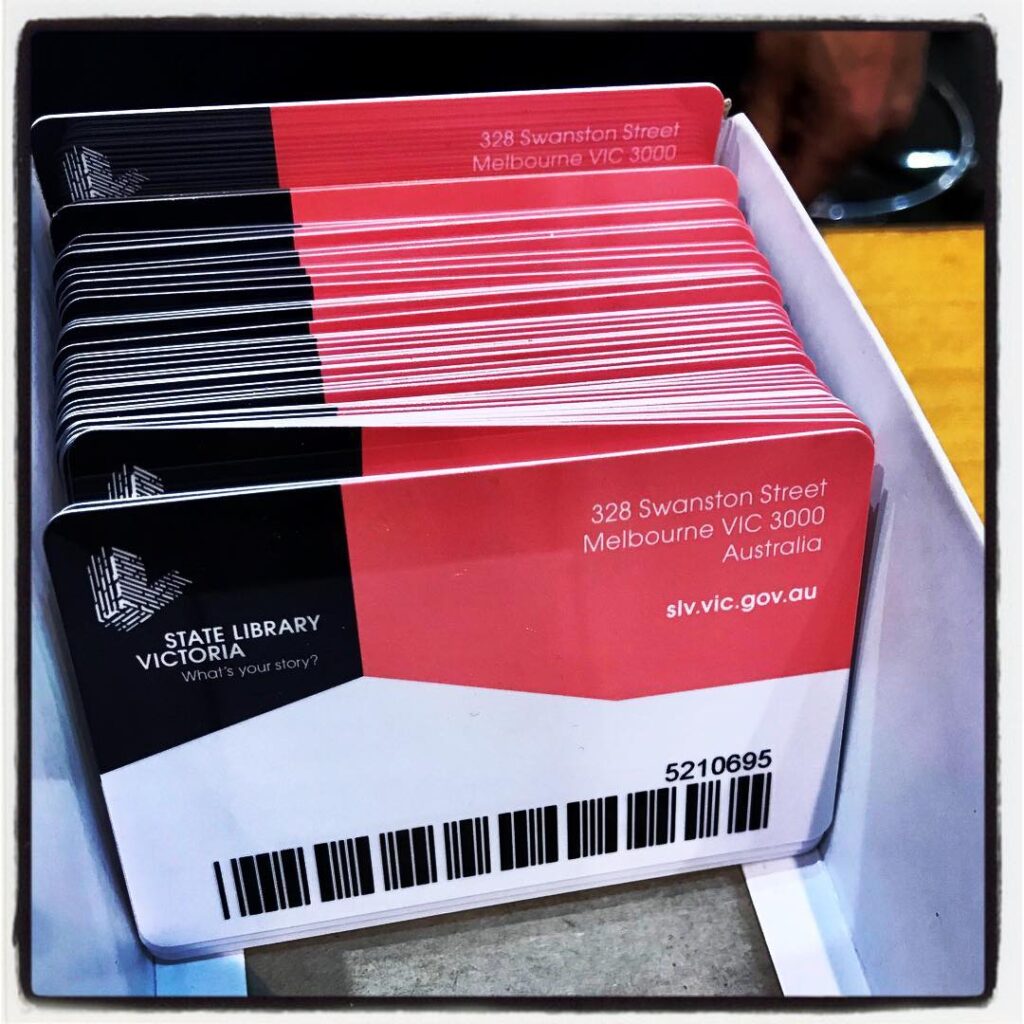In January 2018, I began my new role as Digital User Experience Manager at State Library Victoria. My first task was to map the current experience of joining the Library, both from offsite and onsite. I created a service blueprint to show the journey of becoming a Library member. The blueprint exposes inefficient internal processes of how the business delivers membership.
User pain points and emotional data were lacking. I performed a heuristic review of membership artifacts and backstage processes. Also useful was information I gathered from internal sources:
- conversations with key colleagues
- YouTube channel content
- Google Analytics reports
Analysing and synthesising the data at hand, I created the following map. It is a service blueprint, different to a customer journey map.
Where journey mapping focuses on exposing the end-to-end of your customer’s front stage experience, blueprinting focuses on exposing the surface-to-core of the business that makes up the backstage and behind the scenes of how you deliver and operate, and ties that to the customer’s experience.
The difference between a journey map and a service blueprint by Erik Flowers and Megan Erin Miller

Initiate
The journey of becoming a member starts with people either self-directed or staff-mediated. At this stage, it was indifferent whether people were onsite or offsite. Some people arrived via a Register link in the website masthead. Others were directed to a dedicated computer at a staffed registration desk.
Webform
Next, users completed a web form that lacked optimisation for touch devices. Completing sign-up on a mobile device took 40 seconds longer than a desktop device! Thankfully the HTML and server-side technologies were bespoke. This gave our Digital Experience team the freedom to explore and innovate. Over the upcoming months, we designed, developed, tested and iterated on the form. I lead mobile form improvements and other enhancements.
Member card collection choice
One question on the form asked people how they’d like to receive their Library card: at the Library; or by post. The vast majority, 77%, chose to receive their card by post. Choosing by post means:
- travelling to the Library is unnecessary
- finding your way through a complex building to a registration desk is avoidable
- interacting with staff is not required
However, by post is a slow delivery. It is also a kind of self-service method of receiving your Library card. This option also required laborious internal manual processing efforts.
“… behind-the-scenes the organization is going to great lengths to patch it together and maintain the appearance of cohesion.”
— Erik Flowers and Megan Erin Miller
Manual processing #
At the Library #
Only 23% chose to collect their membership card at the Library.
- New members had to present identification to the staff.
- Then staff grab a plastic card from stock, and adjust a record in a computer system.
- Last, the staff would hand the card to the new member.

By post #
Backstage, staff manually removed spam registrations. Next, they also intervened to resolve incomplete or incorrect addresses.
Then staff would:
- Retrieve a plastic card
- Make record adjustments in a computer system
- Match the card with the corresponding named and addressed envelope
- Pack in a welcome letter.
Then a batch of memberships were taken to dispatch. On business days, Australia Post would start the delivery.
Welcome in the mail
Then, members who chose by post received their card and a generic welcome letter. Some time ago the welcome letter was personalised with the member’s name. Not any longer. It wasn’t even customised. Members outside Victoria got the same messages about accessing e-resources. This is a privilege non-Victorians are ineligible for!
Customer time to membership benefits
Joining onsite took a few minutes once people found their way to the registration desk. For Victorians to receive their card in the post took between 2 to 6 days. Once they have their card number, members can then begin accessing benefits.
After sharing the blueprint
This service blueprint shows potential opportunities for improvement around postal delivery of membership.
… you might be losing tremendous amounts of time, money, and employee morale … by using inefficient and painful internal processes.
— Erik Flowers and Megan Erin Miller
Five months after sharing the blueprint, in June 2018, I led a project which would bring about:
- digital distribution of membership
- faster delivery of member benefits
- automation of manual processes
In future posts, I’ll describe key aspects of the project, including manual accessibility testing of the web form wizard. With over 20,000 registrations every year, this simple transaction fits a sweet spot for digital self-service.